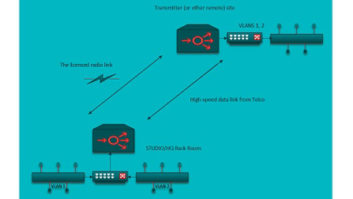“We don’t need a marketing budget for people to find our new station,” a corporate VP once informed me with confidence.
“If we create a superior product, we won’t have any trouble attracting a substantial and sustainable audience,” he said. “Besides, we have the power of an entire cluster of our stations behind us. We can put our personalities on those stations and run concurrent advertising campaigns that will reach over half this market on a weekly basis. Our research shows there’s room for this product, and potential advertisers are all telling us that they can’t wait to spend money with us.”
I wish I could say that I’ve only heard this speech once or twice, but it has become a recurring nightmare in the radio industry.
This type of thinking actually comes from a good, responsible place. It has been pushed down by the highest level of management to eliminate risky expenses and drive profit. Both desires are worthy motivators.
The trouble is that more often than not, a lack of marketing, especially for new radio stations, results in slow launches and frequent failure.
ISN’T IT IRONIC?
There is great irony that an industry that makes its living off selling advertising that is supposed to drive a result for a client, claims that advertising its own product isn’t worth the investment.
I have no trouble hearing a company doesn’t want to invest in marketing its own product because it will badly affect profit margins and will prevent a cluster from hitting an expected forecast.
However, to hear an intelligent, experienced broadcaster state that “outside marketing for radio stations doesn’t work” drives me over the edge. Companies can get sometimes get lucky and fill a need to such a large degree that a new format gains momentum over time, but I see this much more as the exception than the rule.
To quickly address a typical side-step I mentioned at the beginning of my rant: While marketing a new property over existing stations in the same market can add to an outside marketing plan, it will not succeed by itself.
Why? This approach is just not that effective. From what I’ve seen in focus groups, audiences are easily confused when they hear about one radio station’s attributes advertised on another radio station. The typical listener has no idea that multiple stations in the same city are owned and operated by the one company. And guess what? When they do know, they don’t care.

Use promoted Tweets as part of a multiplatform marketing campaign for your new station. Twitter lists the UK’s Absolute Radio as one of success stories on its business.twitter.com page, which highlights examples of companies and organizations that have successfully used their platform for marketing initiatives.
Even when told that Company X owns five stations, they still don’t understand why one station is being advertised on another. They may even think they’ve inadvertently changed channels.
However, I have witnessed positive results with features from station being placed on another — when context is included in the content. For example, a sportscast from a sports station on a music station, or a newscast from a news station on a sister music station can make sense and add value to each product. In these cases, the listener is actually obtaining a benefit.
With straight advertising, some may get it and many will not. This is why the approach will not fly solo.
DOLLARS AND SENSE
So, what’s a new station without a marketing budget to do?
The obvious answer is to not launch the product if you don’t have supporting marketing dollars. Why lose current billing and focus an entire staff’s energy into a new station when success is questionable?
It’s hard to face facts, but people aren’t scanning their car radios every day for new stations. Combine that with shorter attention spans, mobile phones in every hand, devices containing hundreds of songs and an abundance of streaming choices and you’re just asking for trouble.
So, if you actually do have marketing money, what’s the best approach in 2014? TV and outdoor will still give you the best reach and frequency of any media in one market. It is exciting that there are so many localized digital alternatives to complement these mass media.
You can highly target video pre-roll ads online and run very cool display advertising on social media and key websites. For example, you can utilize Facebook to reach news junkies in your city based on behavior. Google can also pinpoint and remarket to audiences as they visit other websites, so they can drive frequency for your message.
As you build a Facebook following, you can easily find friends of friends in large numbers. The advantage of this is that friends of friends often have similar entertainment and informational taste.
Twitter advertising is a tremendous way to spread your reach based on keywords. For example, music stations can use artist names to hit people with messages about your new format.
A few words about expertise: You must find an advertising agency with a great reputation for building media audiences. Don’t let your sales manager steer your business to the agency that spends the most money with your cluster just because that will make them happy.
Also, make sure to test your creative. It’s not that expensive to do shopping mall intercepts where consumers will tell you if they understand your spots and display ads. Don’t spend hundreds of thousands of dollars running advertising that people won’t understand.
Marketing a radio product is exciting, and this feeling should be infectious, spreading to to your staff, advertisers and the entire city. Be loud, be proud and let people know that you’re open for business!
Find more of Mark Lapidus’ Promo Power column atradioworld.com/promopower.











